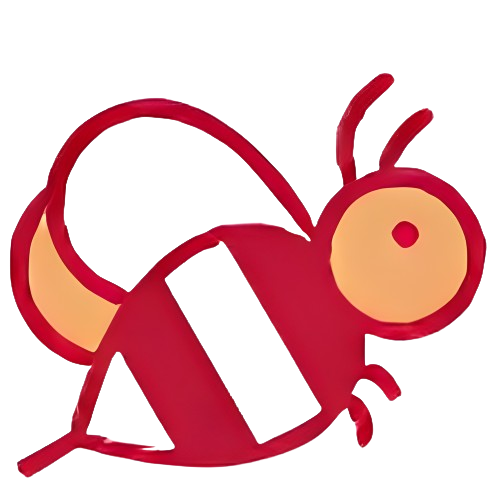


After encountering technical issues that prevented its return, the Starliner spacecraft is now in the final stages of analysis by NASA and Boeing. A decision will be made on Saturday, August 24th to determine if the spacecraft is ready for its return mission. The agency will hold a televised news conference to discuss the findings and outline the next steps. Astronauts Sunita Williams and Butch Wilmore are currently working aboard the International Space Station and have been actively supporting preparations for the potential return.
Starliner Spacecraft Faces Technical Issues, Return Date Pending
Background
The Boeing Starliner spacecraft is a reusable commercial spacecraft designed to transport astronauts and cargo to and from the International Space Station (ISS) as part of NASA's Commercial Crew Program. The Starliner's maiden orbital flight test, known as OFT-2, was launched on May 19, 2022.
Technical Issues and Return Delay
During the test flight, the Starliner encountered a series of technical issues, including:
As a result of these issues, the Starliner was unable to perform its planned docking with the ISS. Instead, it remained in orbit for five days before returning to Earth.
Current Status
The Starliner spacecraft is now back on Earth and is undergoing a thorough analysis by NASA and Boeing to determine the cause of the technical issues. A decision on whether the spacecraft is ready for its return mission, OFT-3, will be made on August 24th.
NASA and Boeing have stated that the astronauts currently aboard the ISS, Sunita Williams and Butch Wilmore, have been actively supporting preparations for the potential return mission.
Top 5 FAQs
1. What caused the Starliner's technical issues?
The exact cause of the Starliner's technical issues is still under investigation. However, NASA and Boeing have identified a number of potential factors, including a valve problem, a software glitch, and an issue with the solar array.
2. When will the Starliner return to Earth?
The Starliner's return date is pending the results of the technical analysis. NASA and Boeing are scheduled to make a decision on August 24th.
3. Will the Starliner carry astronauts on its return mission?
No, the Starliner's return mission (OFT-3) will not carry astronauts. It will be a cargo-only mission to test the spacecraft's capabilities and collect data.
4. What impact will the Starliner's delay have on NASA's Commercial Crew Program?
The Starliner's delay will likely impact NASA's Commercial Crew Program timeline. However, NASA has emphasized that safety is the top priority and that the Starliner will not be allowed to return to flight until all technical issues have been resolved.
5. What is the future of the Starliner program?
The future of the Starliner program will depend on the outcome of the technical analysis and the results of the return mission. If the Starliner is deemed safe and reliable, it could become a key part of NASA's Commercial Crew Program, transporting astronauts and cargo to and from the ISS.

India's first human spaceflight mission, Gaganyaan, is one step closer to reality as ISRO successfully tested the main parachutes for the mission's Crew Module. The test, conducted at the Babina Field Firing Range in Uttar Pradesh, is part of the qualification process for the Gaganyaan parachute system. The system, which includes 10 parachutes of different types, is designed to ensure the safe and stable descent of astronauts returning to Earth. This milestone test marks a crucial step forward for India's ambitious space exploration goals.

As World Pneumonia Day is observed on November 12, experts are drawing attention to the dangerous link between air pollution and respiratory illnesses. In India, the post-Diwali smog adds to the already high levels of pollution, increasing the risk of pneumonia, particularly among vulnerable populations. While outdoor air pollution is often blamed, experts emphasize that poor indoor air quality also plays a significant role in triggering and worsening respiratory infections. Health professionals are urging for better air quality regulations and precautions to prevent this deadly connection between pollution and pneumonia.

On November 12, 2025, the world will once again mark World Pneumonia Day, a global health observance highlighting the urgent need to combat one of the leading causes of death, especially in young children. Despite being preventable and treatable, pneumonia continues to claim millions of lives each year, but efforts such as the ‘Every Breath Counts’ coalition and the Global Action Plan for the Prevention and Control of Pneumonia and Diarrhoea are working towards reducing preventable deaths through vaccination and improved healthcare access. Let us continue to raise awareness and take action against this preventable killer.

As an expectant mother, it is important to be aware of the warning signs that could indicate a potential complication during pregnancy. Dr. Swatee Gaggare, a Consultant in Obstetrics & Gynaecology, shares important insights on the key warning signs every pregnant woman should know. These include unusual bleeding or spotting, severe cramps or abdominal pain, and excessive vomiting. Early detection and prompt medical intervention are crucial for a safe outcome for both mother and baby.

November 10 marks World Science Day for Peace and Development, a celebration that highlights the crucial role of science in our daily lives. This year, the event will take place in Samarkand, Uzbekistan, where the theme "Trust, Transformation, and Tomorrow: The Science we Need for 2050" will be explored. Through public engagement and education, scientists aim to address global issues and create a better future for our planet.

On World Tsunami Awareness Day, scientists are highlighting the importance of traditional knowledge in predicting and preparing for tsunamis. Coastal communities have long relied on observing animal behavior to sense environmental changes and predict natural disasters. This technique has proven effective in areas without advanced warning systems. Scientists are now studying these natural warning signs to improve early detection and save lives in vulnerable regions.

Every year, India celebrates the birth anniversary of the renowned physicist CV Raman, who is known for his groundbreaking work on light scattering and the Raman Effect. Despite receiving numerous offers to work in Western labs after winning the Nobel Prize in Physics, Raman remained committed to his belief in fostering a strong scientific culture in India and mentoring future scientists. His discovery of the Raman Effect continues to be relevant and widely used in various fields today, serving as a testament to the quantum nature of light and the energy levels in molecules.

As meditation gains popularity as a mental well-being tool, concerns about potential side effects have emerged. A recent study by a team of researchers from the University of Melbourne delved into the prevalence of adverse experiences among meditators in the United States. By recruiting nearly 900 adults from various meditation skill levels, the study aimed to provide more accurate estimates of how common these side effects are and what factors may contribute to experiencing them. The findings highlight the need for clearer reporting standards in future research on meditation.

Prime Minister Narendra Modi launched a groundbreaking research, development and innovation scheme that will provide a boost to the flourishing ecosystem of innovation in India. In his address at the Emerging Science, Technology and Innovation Conclave, PM Modi highlighted the crucial role of science and technology in driving transformation and emphasized on India's significant progress in the field. He also acknowledged the remarkable achievement of India's women's cricket team and expressed confidence that their success would inspire the country's youth. Attendees included renowned scientists, innovators, and distinguished guests from both India and abroad.

Indian Prime Minister Narendra Modi inaugurated the Emerging Science and Technology Innovation Conclave (ESTIC) 2025 and launched the Rs 1 lakh crore Research Development and Innovation (RDI) Scheme Fund. The scheme aims to strengthen the private sector-driven research and innovation ecosystem in the country and has a total outlay of Rs 1 lakh crore over 6 years. ESTIC 2025, gathering over 3,000 participants, focuses on 11 critical thematic areas including Artificial Intelligence, Quantum Science and Technology, and Space Technologies, providing opportunities for collaboration and reinforcing India’s science and technology ecosystem.